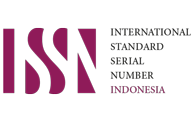Performance Assesment by Using Behaviorally Anchor Rating Scale and Management by Objective in PT. X
Abstract
Keywords
Full Text:
PDFReferences
A. Rifazka, D. Darmantoro, and E. Budi Setiawan, “Penilaian Performansi Kerja Account Manager Dengan Menggunakan Metode Mbo (Management By Objective) Dan Rich (Rank Inclusion In Criteria Hierarchies),” Seminar Nasional Aplikasi Teknologi Informasi, 2009.
S. C. Debnath, B. B. Lee, and S. Tandon, “Fifty Years and Going Strong: What Makes Behaviorally Anchored Rating Scales So Perennial as an Appraisal Method?,” 2015. [Online]. Available: www.ijbssnet.com
D. Saputra, A. Sucipto, M. Al Kahfi Masputra, and H. Rizky ASiregar, “Implementasi Metode Bars (Behaviorally Anchored Rating Scale) Pada Sistem Penilaian Kinerja Pegawai ( Studi Kasus : Pt. Laksana Aneka Sarana),” Journal of Telematics and Information, vol. 3, no. 1, pp. 12–20, 2022.
H. Hendriyal et al., “Implementasi Management by Objectives (MBO) di Madrasah Tsanawiyah,” Edukatif : Jurnal Ilmu Pendidikan, vol. 4, no. 1, pp. 1466–1474, Jan. 2022, doi: 10.31004/edukatif.v4i1.2169.
E. Rouza and B. Yanto, “Penerapan BARS (Behaviorally Anchor Rating Scale) Berbasis Web Dalam Penilaian Kinerja Karyawan,” 2019.
H. Suradiraja, “Penyusunan Penilaian Kinerja Model BARS untuk Meningkatkan Persepsi Karyawan Terhadap Objektivitas Penilaian Kinerja,” Jurnal Sosio-Humaniora, vol. 6, no. 1, pp. 90–115, 2015.
Asmaudi and Iing Pamungkas, “Application of Behaviorally Anchor Rating Scale (BARS) Method to Assess Employee Performance at Diskoperindag Aceh Jaya,” Jurnal Inotera, vol. 8, no. 2, pp. 385–392, Dec. 2023, doi: 10.31572/inotera.Vol8.Iss2.2023.ID216.
I. Susanti, A. V. Hubeis, and S. Kuswanto, “Perancangan Manajemen Kinerja Penyelenggaraan Pendidikan Pelatihan dengan Ancangan Management by Objective (MBO) dan Perspektif Balance Scorecard,” Jurnal Manajemen & Agribisnis, vol. 9, no. 1, pp. 43–58, 2012.
G. Utomo, B. Riyono, and S. Budiharto, “Efektifitas Program Management By Objectives Pada Tingkat Work Engagement Karyawan Pt. X Ice Cream Yogyakarta,” Jurnal Ilmiah Psikologi Terapan, vol. 05, no. 02, pp. 210–225, 2017.
A. L. Harahap and S. Perdana, “Analisis Penilaian Kinerja Karyawan Menggunakan Metode Behaviorally Anchor Rating Scale (BARS) Dan Management By Objctives (MBO) Di Cv Brilliant,” Jurnal Ikraith-Humaniora, vol. 5, no. 3, pp. 18–26, 2021.
Refbacks
- There are currently no refbacks.







